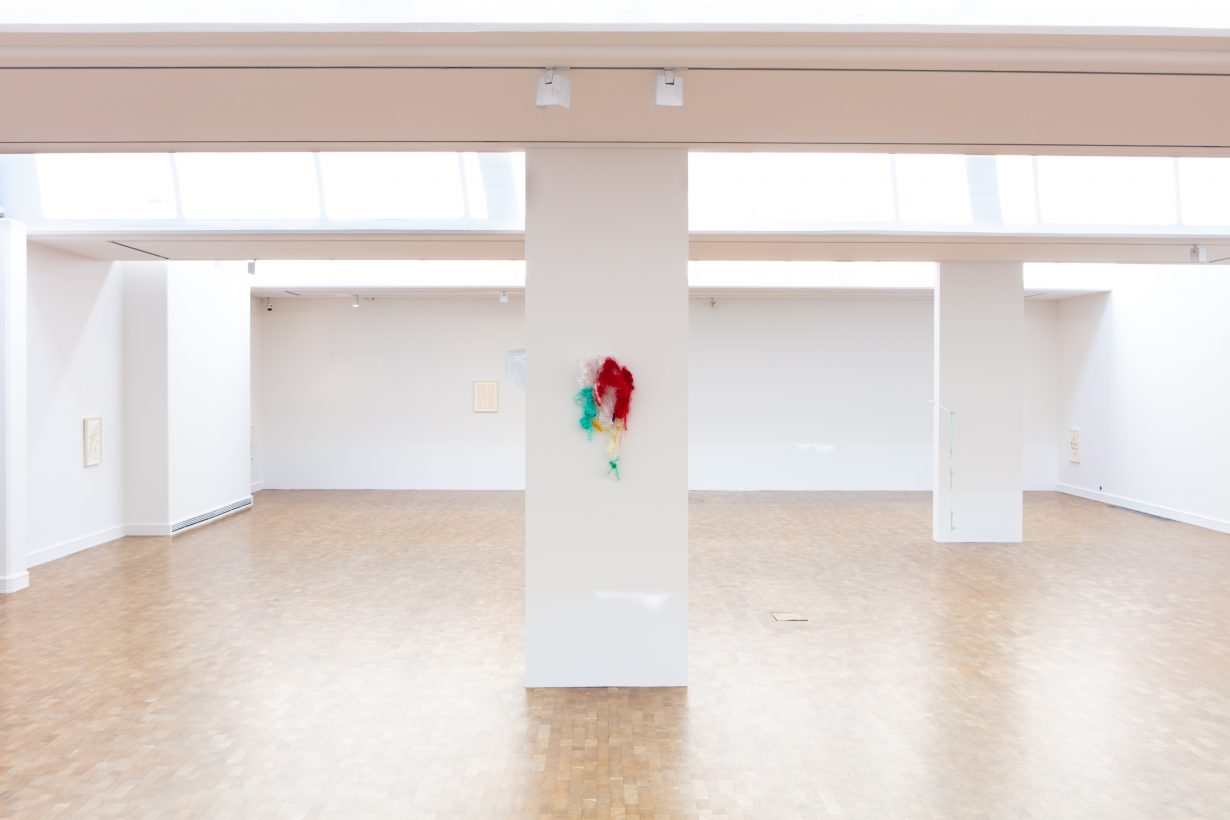Liðamót / Ode to Join at National Gallery of Iceland favours sparseness, depending on and highlighting the gallery’s architecture for suggestion
In Independent People (1934/35), Icelandic author Halldór Laxness weaves a saga-like novel about a subsistence sheep-farmer, Bjartur of Summerhouses. After years of humiliation serving a rich farmer, Bjartur finally owns a rustic heath on which to raise a choir of bleating yews. The agrarian saga follows him as he survives hardships and absurdities to achieve independence, damn the cost. An ode to the resilient attitude of rural Icelandic life, the book also parodies stubborn individualism, a road- block to collectivity. Margrét H. Blöndal’s Liðamót / Ode to Join deftly balances this tension between self-reliance and dependence, which manifests in her humble drawings and sculptures.
At first glance, the exhibition seems to model self-sufficiency. It was produced by the artist in the space, requiring little in the way of flash and bang. About a dozen framed works on paper – colourful photo-album-sized scrawls and jottings made with oil and dry pigments – are shown alongside fragile, precarious sculptures made of torn fabric, dyed and frayed, and entangled with wood scraps and rods (all works Untitled, 2022). The drawings feel like literal embodiments of the fuzziness of thought itself. Take one example: five saturated blocks of colour hover in the bottom half of the paper. Pea-green, cerulean and sienna bleed into the paper, surrounded by the transparent weep of oil stains. They are lyrical gestures, spaced out on the page like concrete poetry.


The drawings always appear in conversation with the sculptures. Nearby, Blöndal has affixed an attenuated scrap of wood, stained white, perpendicular to a column. From it dangles a teal tatter of fabric, which joins with another cane, equally thin and long, floating parallel to the supporting column. The exhibition’s Icelandic title refers to the movement that arises from the intersection of three or more joints. This sculpture, in a dance between itself, the gallery’s architecture and the viewer, embodies such precarity. It feels so light it might be disturbed by the viewer’s movement, should one’s pace be too brisk.
Blöndal’s exhibition advances a sense of can-do, but much more measured than the bucolic obstinance of Laxness’s farmer. Thoughtfully low-tech, her work turns away from the overproduced spawn of the contemporary artworld. The installation favours sparseness – there is plenty of empty floor and wall – inaugurating a situation in which Blöndal’s unpretentious works depend on the gallery’s architecture, and highlight it. Absent the smack of obscene capital, Blöndal’s refreshing approach to art suggests that even the most resilient, self-reliant works must depend on something.
Liðamót / Ode to Join at National Gallery of Iceland, Reykjavík, through 2 October